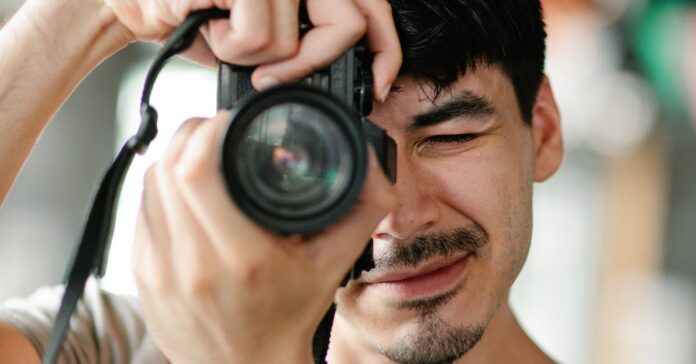Photography is a skill that many individuals are now interested in. Becoming a great photographer just involves learning a bit of information and then applying it when you’re taking those special shots. These are some wonderful tips to help you improve your photography knowledge.
Try moving in closer to your subject when you’re taking pictures. If you take pictures from different distances, you’ll be able to get a few different perspectives and some may come out better than others. Try to get where the subject of your photo fills the entire viewfinder of your camera – this will give you a lot more details of the subject rather than just filler details.
Play with the shutter speed setting to get shots of both slow and fast-moving subjects. Slow shutter speeds are great for objects that move very slowly, such as streams. Fast shutter speeds, on the other hand, allow you to get a clear shot of a subject that is moving very quickly, such as a race car.
Learn how to play with the shutter speed. You can choose to snap a quick picture or choose a slower exposure to capture a flow or movement in its entirety. You will need to experiment with this and find what kind of speed matches certain situations. This is a matter of personal style rather than a general guideline to follow.
When shooting landscape pictures, cultivate depth in your shots. When you place familiar objects in the foreground of the image, you can help viewers to perceive the size and scope of the subject. If you want more sharpness in your photos, especially in the fore- and background, opt for a smaller aperture. This means an aperture of f/8 in a general digital camera or no more than f/16 in full-frame SLR cameras.
Shoot during the “golden hours,” especially if you are shooting human subjects. The time around dawn and dusk are named “golden hours” because the hue of the light makes objects look like they are glowing. This light also complements human skin, making human subjects appear to look better than they would in photos taken at other times of day.
Do not shoot in full daylight. You are going to get some of your best photos on an overcast day. The bright sunlight can cause overexposure, loss of detail and terrible shadows. Shoot at dusk or at dawn on days that are not cloudy for optimum results in your photos.
On your smart phone (as long as it has a camera), keep a special inspiration album within your photos. Every day you may stumble upon some amazing, inspirational idea, moment or place. Snap photos of these locales and moments, and store them in this inspiration album. Next time you are looking to try something new with your photography, look back to your inspiration folder for some great brainstorming ideas!
Focus on a single subject in your photographs. Pictures will work best with a single, clear point of focus. Setting up a composition that involves multiple subjects can be difficult and can result in a disorganized, cluttered frame. Having a single subject also makes setting your zoom and other settings easier.
When working around subjects that are moving a lot or are totally in action, you need to focus on capturing the moments by keeping your trigger down. These kinds of moments can not be recreated and there are no do-overs. Keep your eye on the areas at all times and keep shooting.
While taking a photograph, many factors come into play that will determine if the photo comes out well. If there is too much light when the picture is taken, your photo will come out with a glare. If your camera isn’t focused, your photo will come out blurry. And if your camera is tilted the photo will come out tilted as well. This is why it is always a good idea to take multiple photos of your subject while adjusting with your camera’s settings in order to be sure that you have at least one proper photograph.
A random element that can give you unique photos is to change the lighting. There is an unlimited number of ways you can use light to change pictures. Using side lights can help to create silhouetting the subject to hide their features. It can also create back-lighting and mood. Using sync-flash can also help to create unique photographs.
Although counter-intuitive, wearing white in a photograph is actually a terrible idea. If you are using the auto focus feature on your camera, it will record many varying colors and shading that it picks up through the lens. Wearing white ensures that the auto-focus can’t get a proper reading, leaving the photograph washed out.
At this point, you should have enough knowledge to do great and be able to succeed with photography. You can now apply this knowledge and start to take photographs.

